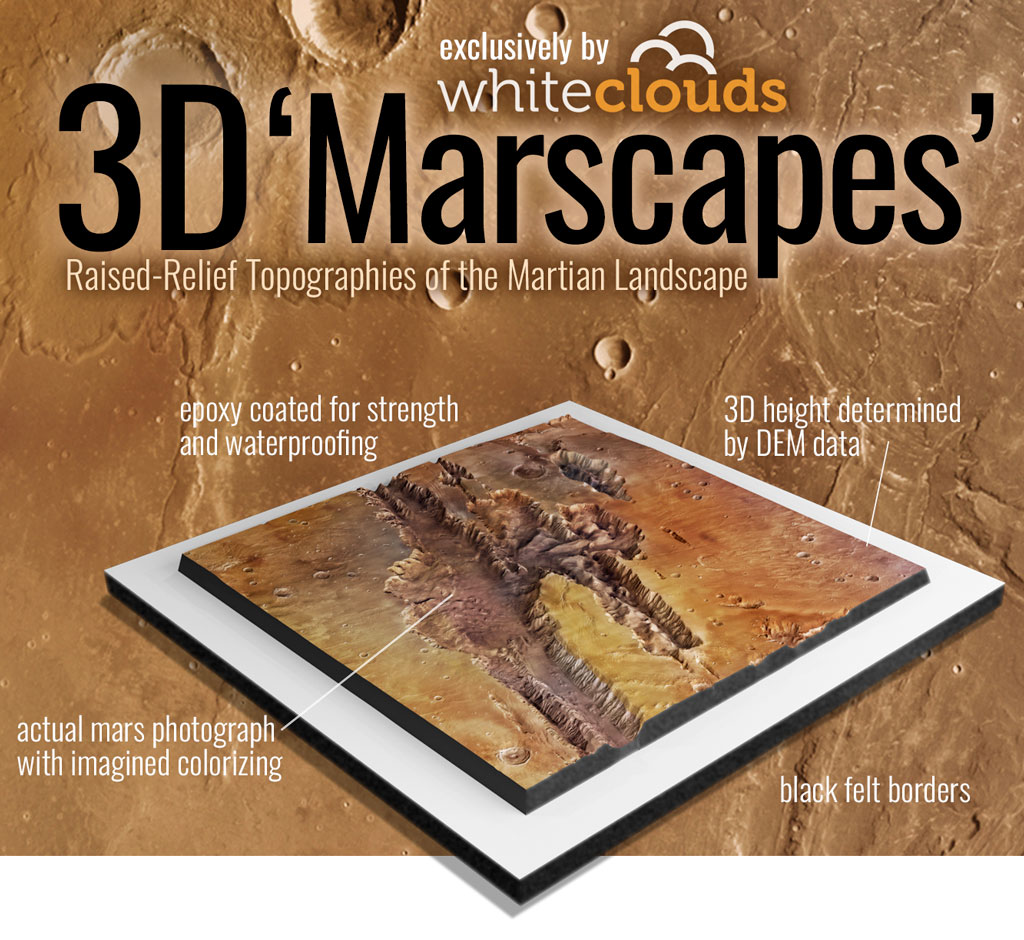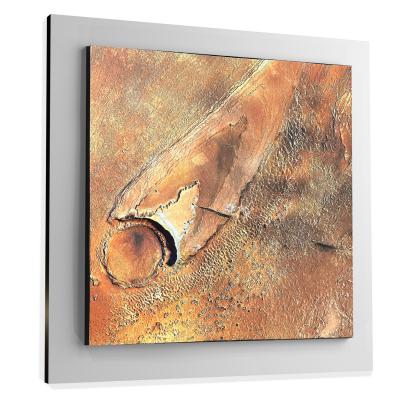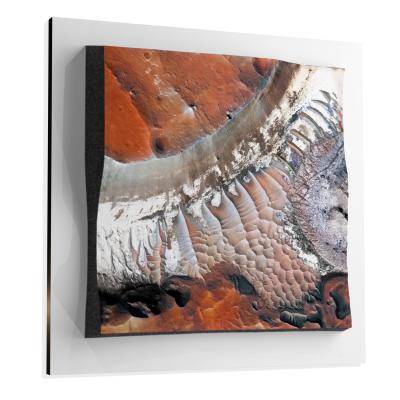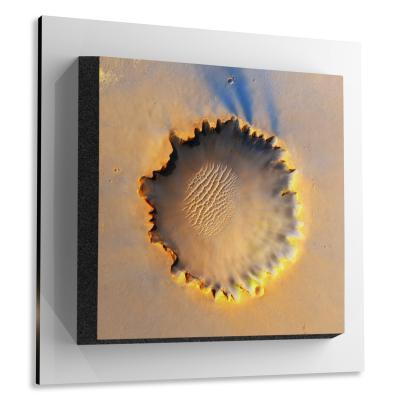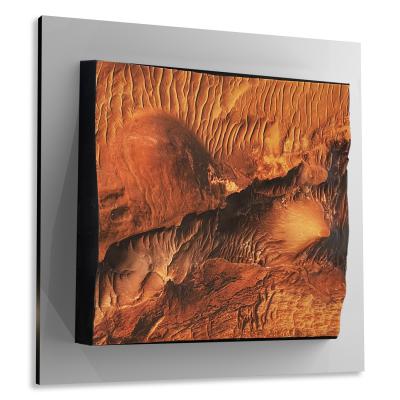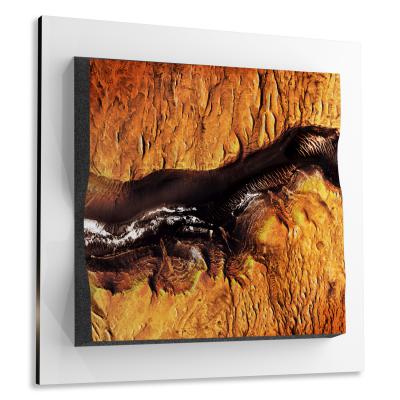Danielson Crater
Danielson Crater
We Build Custom 8K Mars Canvas Prints of Danielson Crater
Did you know we make
custom
8K Mars Canvas Prints

and
3D Marscapes

Danielson Crater
Danielson Crater is one of the most captivating and scientifically significant features on the Martian surface. Named in honor of George E. Danielson, a scientist who significantly contributed to planetary studies, the crater has become a focal point for researchers interested in Martian geology, climatology, and the planet’s past potential for harboring life.
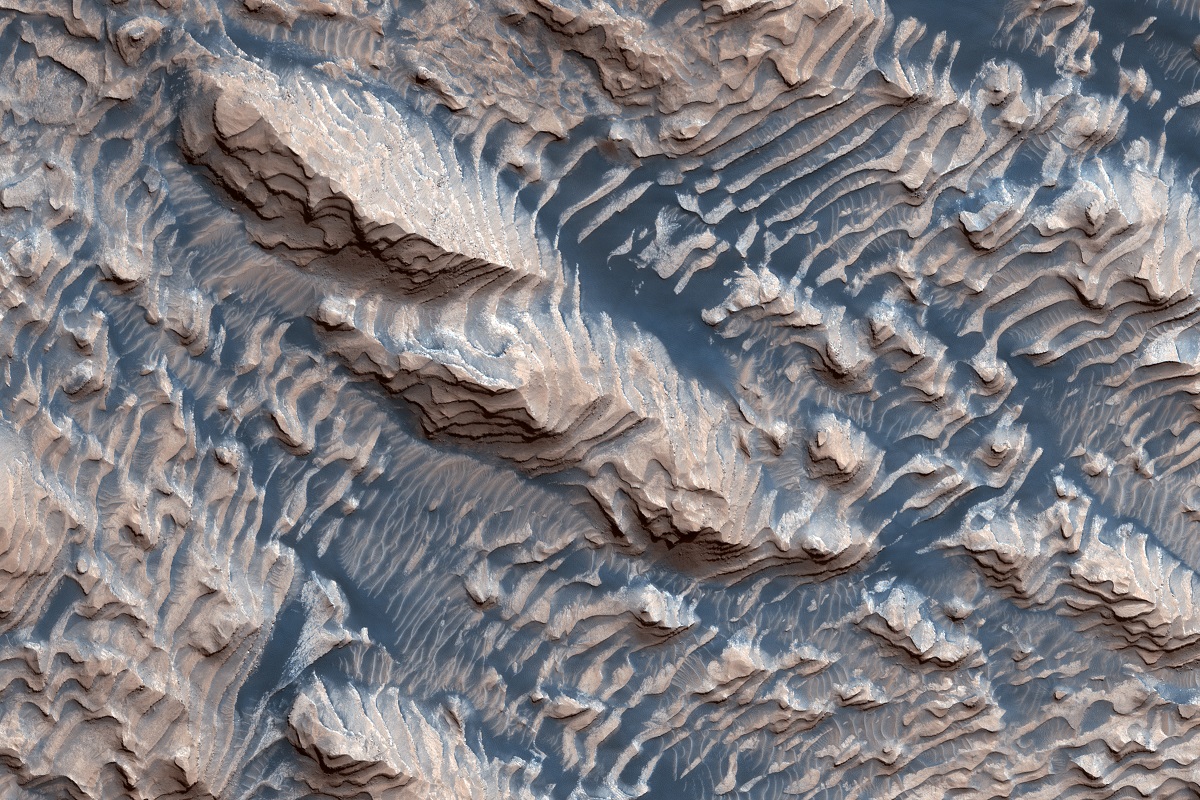 Layers in Danielson Crater
Layers in Danielson Crater
Geographical Location
Situated within the expansive Arabia Terra region on Mars, Danielson Crater lies at geographic coordinates of approximately 8°N latitude and 7°E longitude. The crater’s diameter stretches to an impressive 65 kilometers, categorizing it as one of the more sizable impact features within this already extensive Martian terrain. In terms of its spatial relationships, the crater is neighbored by a variety of intriguing geological features. These include smaller craters and a network of channels that are believed to have once served as ancient waterways, thus making the site even more tantalizing for hydrological studies. Danielson Crater’s geographic location is far from coincidental when considering its scientific significance; it occupies a focal point within Arabia Terra, an area that has been a hotbed of scientific inquiry for its potential to reveal the geological and hydrological history of Mars. As a part of this greater region, Danielson Crater can be seen as a microcosm that encapsulates many of the geological questions and mysteries associated with Arabia Terra, thereby making it an invaluable natural laboratory for understanding the diverse and enigmatic geological narratives of the Red Planet.
Advertisement
Sample Marscapes
Geological Composition
The geological intricacies of Danielson Crater are both complex and compelling, revealing a rich tapestry of geological history. The floor of the crater is not a monolithic structure but a stratified assembly primarily composed of sedimentary rocks. Within these sedimentary layers, an abundance of minerals such as sulfates and clays have been detected. These minerals are particularly noteworthy as they serve as chemical markers for past aqueous activity, implying that water was not just a transient visitor but may have played a significant role in shaping the geological landscape. Further elaborating on the geological composition, high-resolution satellite imagery has disclosed intricate layers of strata on the walls of the crater. These strata provide a sequential record of multiple geological processes, encompassing volcanic episodes, sedimentary deposition, and even evidence pointing to possible glacial movements. Moreover, the crater’s rim and its surrounding ejecta blanket are not to be overlooked; they appear to contain basaltic rock formations. These could be the remnants of ancient lava flows or could have been formed from the melt produced during the asteroid impact that originally created the crater.
Significant Discoveries
Evidence of Water
One of the most awe-inspiring discoveries associated with Danielson Crater has to be the myriad of clues pointing towards a history rich in water activity. The detection of clay minerals, often formed in the presence of water, constitutes significant evidence that water was not merely episodic but might have been a long-term actor in the geological play, shaping and molding the Martian landscape over an extended period.
Layered Deposits
Another captivating feature is the existence of complex layered deposits within the inner ring of the crater. These deposits bear striking resemblance to sedimentary rock formations seen on Earth, raising tantalizing questions about similar geological processes and deposition mechanisms that could have occurred on both planets.
Complex Erosion
Adding yet another layer of complexity are the intricate erosional patterns manifesting on both the walls and the floor of Danielson Crater. These erosional features offer a vivid testament to the multitude of geological processes that have been at work over millions, if not billions, of years.
Scientific Missions
Danielson Crater has attracted significant attention from the scientific community, becoming a subject of detailed study through multiple Mars missions. A pivotal role has been played by NASA’s Mars Reconnaissance Orbiter (MRO). MRO’s High-Resolution Imaging Science Experiment (HiRISE) and the Compact Reconnaissance Imaging Spectrometer for Mars (CRISM) have been instrumental in capturing high-resolution imagery and comprehensive spectroscopic data of the crater. While the site has not yet been visited by lander or rover missions, the compelling features and questions it poses have propelled Danielson Crater to the forefront of candidate locations for future exploratory missions, particularly those interested in understanding the planet’s geological, hydrological, and possibly even astrobiological history.
Geomorphological Features
When it comes to geomorphological features, Danielson Crater stands as a veritable treasure trove, revealing a rich and multifaceted geological history. The crater floor is not a simple, flat surface but a complex terrain etched with deep gullies, channels, and sedimentary deposits. This intricate topography points to the influence of multiple shaping agents over the crater’s history, including water, wind, and perhaps even glacial activity. Among the most captivating features are the layered terrains, which present a detailed stratigraphic record in the form of rock layers exposed on the walls of the crater. These formations allow for groundbreaking opportunities in stratigraphic research, offering keys to unlock the complex geological and possibly climatic history that is encoded in the very fabric of Danielson Crater.
Danielson Crater is an extraordinary geological archive on the Martian surface. Its unique combination of sedimentary layers, diverse mineralogy, and compelling erosional features make it an invaluable site for scientific study. As Mars exploration missions continue to evolve, Danielson Crater remains at the forefront of locations that could provide further insight into the planet’s geological history and its potential to have hosted life in the past. Through ongoing and future missions, we can hope to unlock more secrets held within this intriguing Martian feature.
Check out our 3D Mars Learning Center for more information on Mars and Danielson Crater. You can also learn more at: NASA Mars Exploration.
More About Mars
Contact us today to learn more about our 3D services and how we can help you achieve your goals.
